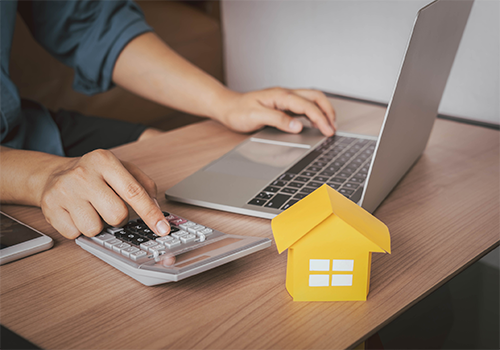Planning for Your Home Purchase
05/02/2023

Before you buy a home, you'll need to determine how much debt is reasonable for you and what upfront costs you'll incur during the purchase process - from a down payment to closing costs.
The Debt-to-Income Ratio
When you apply for a mortgage, lenders compare your pre-tax income to your housing costs and other debt payments. Known as the "debt-to-income ratio," this figure helps lenders determine how much money you can afford to spend on monthly mortgage payments.
The debt-to-income ratio also governs how much you can borrow to buy a house. In general, most lenders prefer that all debts, including housing costs, should total no more than 36% of income. The debt-to-income ratio allowed by lenders can vary, however, especially if you're able to make a down payment of 20% or more and have little additional debt.
But the ability to qualify for a certain loan doesn't always mean that you can afford the loan. You may have heard the term "house poor" before - meaning your home ownership expenses leave you with little cash for anything else. Remember, the debt-to-income ratio just measures income and debt. It doesn't consider your spending habits or non-debt expenses like health insurance or childcare. Especially when buying your first home, it can be a good idea to consult with a financial professional - one who places your overall financial interests first.
View AHCU's recent Home Buying Seminar
Saving for a Home Purchase
When buying a home, there are upfront costs you'll need to consider. Costs can include:
- A down payment of at least 5% - 20% of the purchase price.
- A loan origination fee.
- Legal fees.
- An escrow deposit (money deposited with your home offer).
- Cash reserves of at least two months of principal, interest, taxes and insurance (PITI) payments, depending on your lender.
- Inspection, appraisal and title search fees.
- Moving costs.
- Utility deposits.
The largest cost is likely to be the down payment, a payment that's applied directly to the cost of your home. Unless you qualify for a special lending program, down payments typically range between 5% and 20% of the cost of the home. In addition to reducing the cost of your mortgage, a large down payment can also eliminate the need to purchase private mortgage insurance (PMI), a type of insurance policy that's required of borrowers with less than 20% equity in their home. Depending on the amount borrowed, avoiding PMI could save hundreds, if not thousands, of dollars per year.
To estimate the minimum you should save for a down payment, it's helpful to get an idea of how much you can afford to spend on a home. A rule of thumb is that the cost of your home should be somewhere between two and three times your annual income. For example, a person with an annual income of $100,000 may want to consider finding a home that costs between $200,000 and $300,000. In expensive metropolitan areas, it's sometimes necessary to spend even more. Like the debt-to-income ratio, any rule of thumb about home affordability can't account for your specific situation, so you'll always want to run your budget numbers before making a decision. Will you have enough to cover your expenses plus any home repairs? Will you have enough money to make it through a period of unexpected unemployment?
Excluding your down payment, other costs associated with buying a home can total between 2% and 5% of the home's price. Some of these costs, however, can be included in your mortgage.

